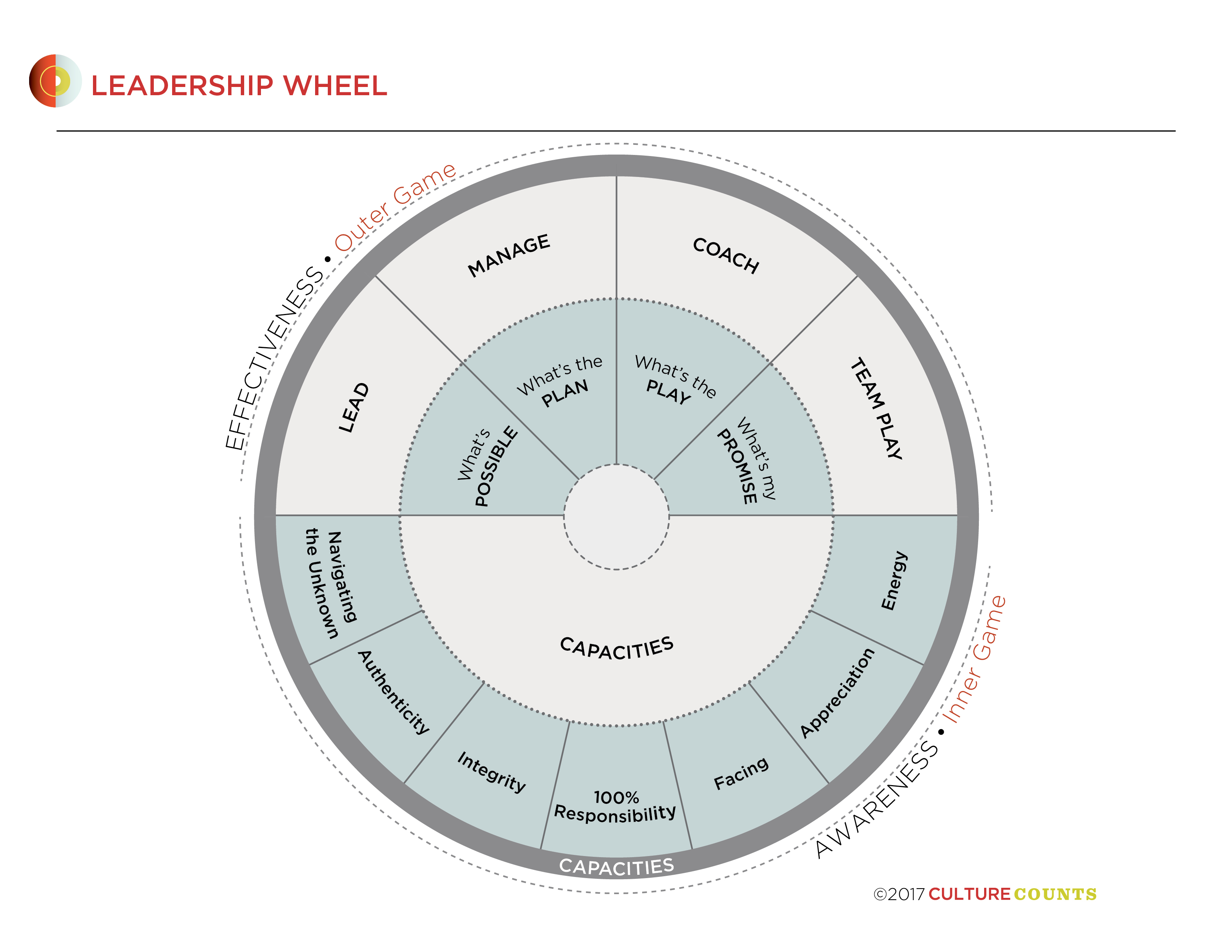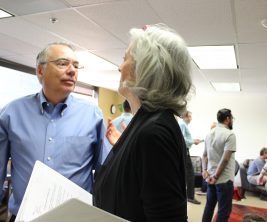January 13, 2017

Develop Your Inner and Outer Game to be a More Effective Leader
Have you heard of playing the “inner game”? In tennis or in golf, this refers to the game being played inside the mind of the athlete, in which self-doubt, anxiety, and lack of focus are the obstacles to be mastered.
In his 1974 book The Inner Game of Tennis, Timothy Gallwey writes: “You cannot force your brain and body to achieve results. There’s a much easier route to performance, which involves letting the intelligence of the body and the unconscious mind express what it knows.”
At Culture Counts, we help leaders develop their inner game as well as expand and grow their outer game.
Put together, these two concepts equal the Leadership Wheel.
The Outer Game — Wearing the Four Leadership Hats
The top half of the leadership wheel is all about effective actions you can take that support you taking a concept all the way to results.
Leaders wear four different “hats” at any given point in time, says Whitney Walpole, president and founder of Culture Counts.
The four hats of leadership are:
- The Leadership Hat: What’s possible?
- The Manager Hat: What’s the plan?
- The Coach Hat: What’s the next play?
- The Team Player Hat: What’s my promise?
“As leaders, we all wear these hats at one time or another,” says Culture Counts coach Sarah Carr. “But sometimes they can get muddled together and blurry. When you can pull them apart and become more choiceful — realizing when you need to be a leader and when you need to be a team player — things get clearer and more powerful.”
The Inner Game — Developing your Capacities
“What powers your outer game and allows people to fulfill on their goals most effectively is their capacity to bring forth their inner game,” Sarah says. “The more you bring these forward, the more you can influence people and results.”
At Culture Counts, we coach our clients on how they can develop these capacities as a leader.
Responsibility. We coach leaders to take 100 percent responsibility for their actions, instead of playing the “blame game” and having a victim mentality of, “Something bad always happens to me.” Instead, leaders are encouraged to own their “part” — and the impact of their attitude and behaviors.
Authenticity. It can seem scary or humiliating to express how we feel at work. But the desire to express what’s really going on and be true to us is an important step in increasing our leadership capacity. A leader is more effective when they can genuinely express feelings and emotions.
Facing. Oftentimes in business we don’t want to have the tough conversations. We don’t really want to look at and talk about results, or maybe our teams don’t. So how can we, as team leaders, increase our capacity to “face” what’s really going on?
Integrity. Do your words match your actions? Most of us want to do this – we have great intentions. And it can be challenging. The more consistently we do this, the more we can build trust in ourselves and trusting relationships with our team.
Appreciation. How much do we appreciate others and ourselves? How can we grow our ability to lead our teams based on what’s working rather than what the problems are?
Navigating the unknown. It’s common for us — when we don’t understand something in business, or when we feel tight about looking at any issue — to restrict our own creativity and block access to solving the problem altogether.
Energy. Energy is the fuel that gives us the motivation to keep trekking from idea to execution. It’s the willingness to want and to allow others around us to want, which fuels motivation and emotional commitment.
What project are you working with on your team that has stalled or isn’t going the way you want it to? If you had access to one of these capacities to solve your problem…what would it be?



